By Dan Weisz
Here are some more of the ‘backyard birds’ that I saw at The Pond at Elephant Head last week. In addition, there were a few four-legged furry things around. First, one more look at a few birds:
The Gila Woodpecker on the cholla skeleton:
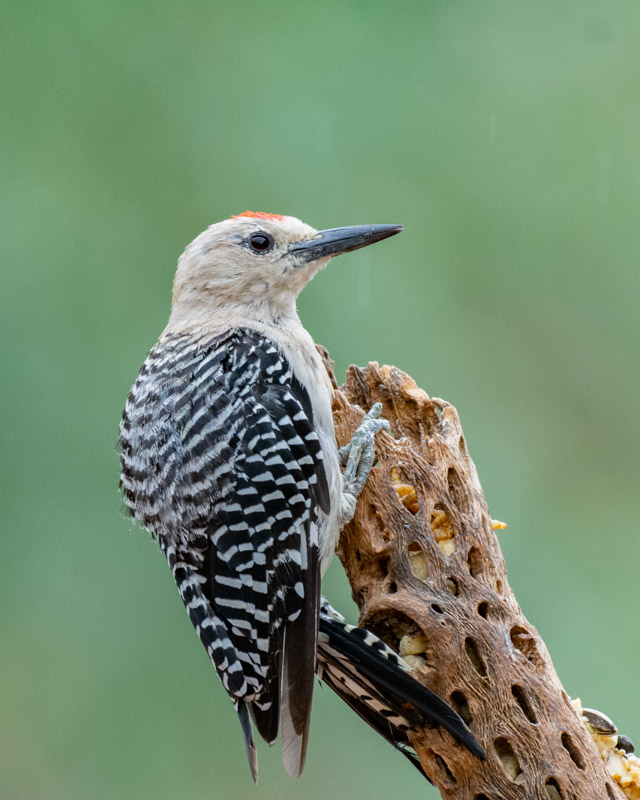
And a look at the Gila with a treat in its mouth:
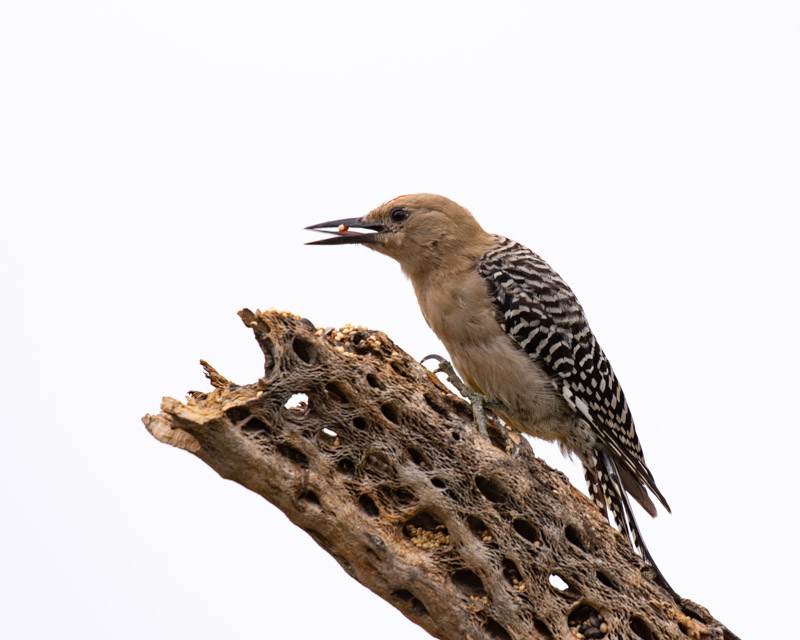
The White-winged Dove staring right back at you!
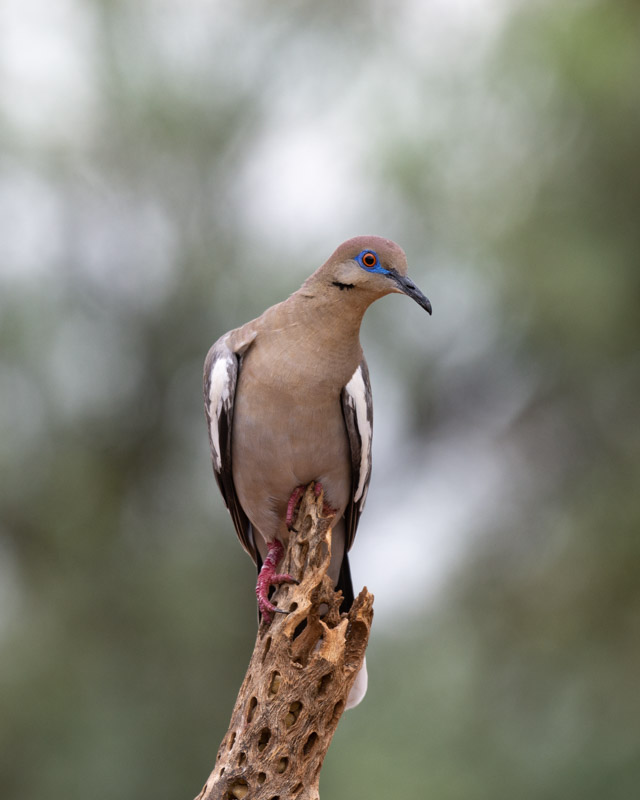
White-winged Dove on an Ocotillo branch.
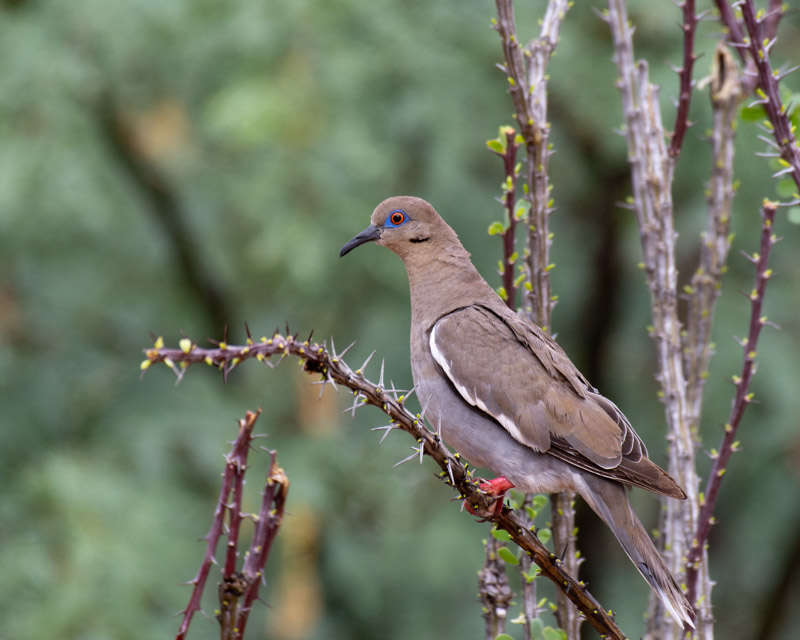
A Brown-headed Cowbird sits perched on saguaro ribs. This stocky blackbird has an unusual way of raising its young. It is a “brood parasite” meaning these birds do not build nests. Instead, the female puts energy into producing very many eggs which it then lays in the nests of other birds, abandoning her young to ‘foster parents’. Often, this is at the expense of at least some of the host’s own chicks. Still, this is a nice looking bird.
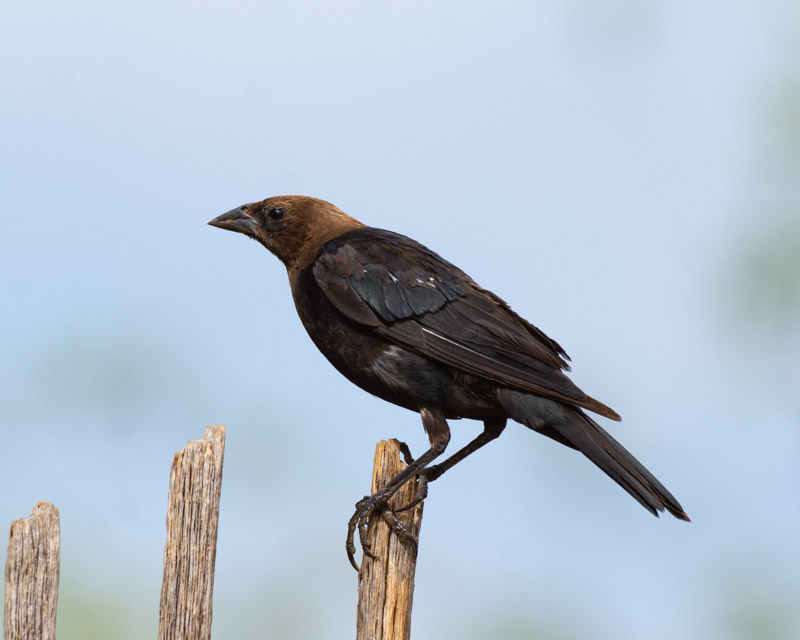
Here is a juvenile Brown-headed Cowbird beginning to get its adult feathers. It looks like a car with rust spots that has been primed for a paint job over various parts of its body. You can compare the bird’s size to that of the house finch behind it. So if young cowbirds are raised by foster parents, how do they figure out how to become functioning adult cowbirds? Mystery solved: https://www.audubon.org/news/how-does-cowbird-learn-be-cowbird
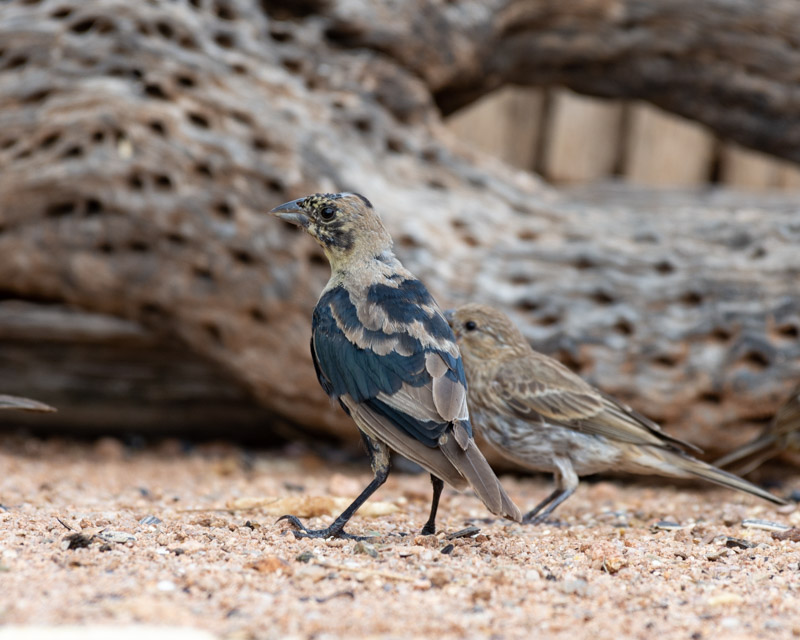
Harris Antelope Squirrels scampered around. This squirrel is a ground squirrel but because of its looks, is often mistaken for a chipmunk. Chipmunks live in much higher elevations while the Harris Antelope Squirrel is a creature of rocky deserts. It does have a white stripe on its side but not on its face.
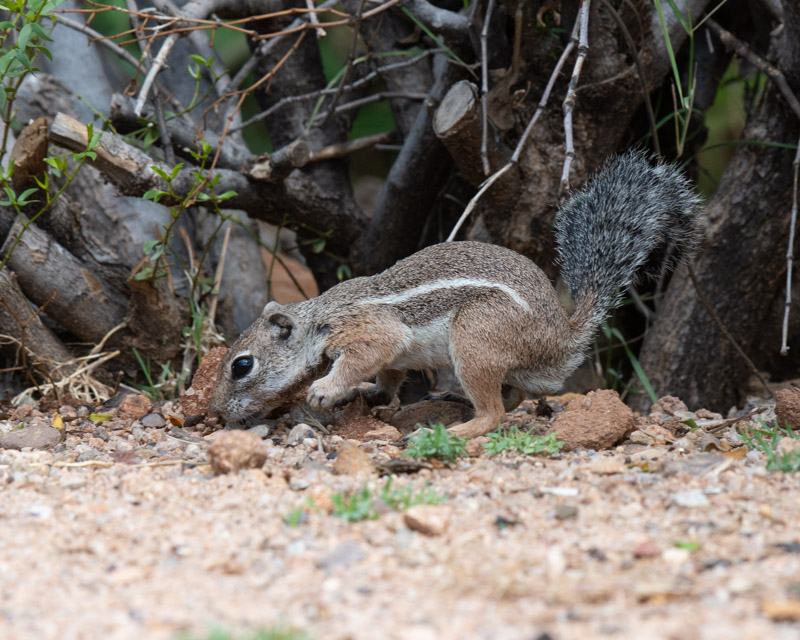
The Harris Antelope Squirrel is active year-round and is even out and about during the midday heat of our summers. It holds its tail arched over its back to provide shade for the itself- definitely a good idea and clever adaptation.
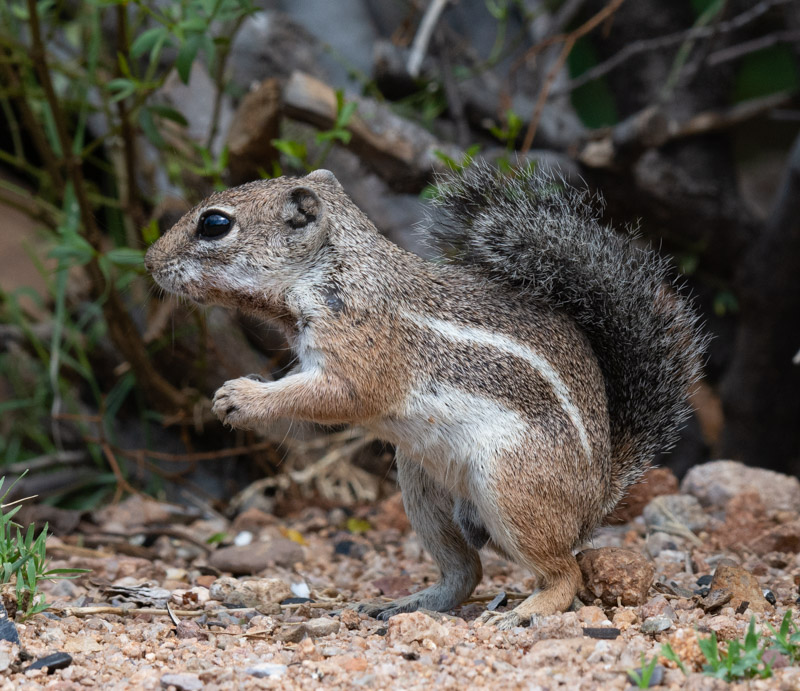
The Desert Cottontail is one of the cutest and most visible mammals of our deserts. Its lot in life is to be a prey species for pretty much every predator in the Sonoran Desert. The pose below may indicate it is alerting to something dangerous out there.
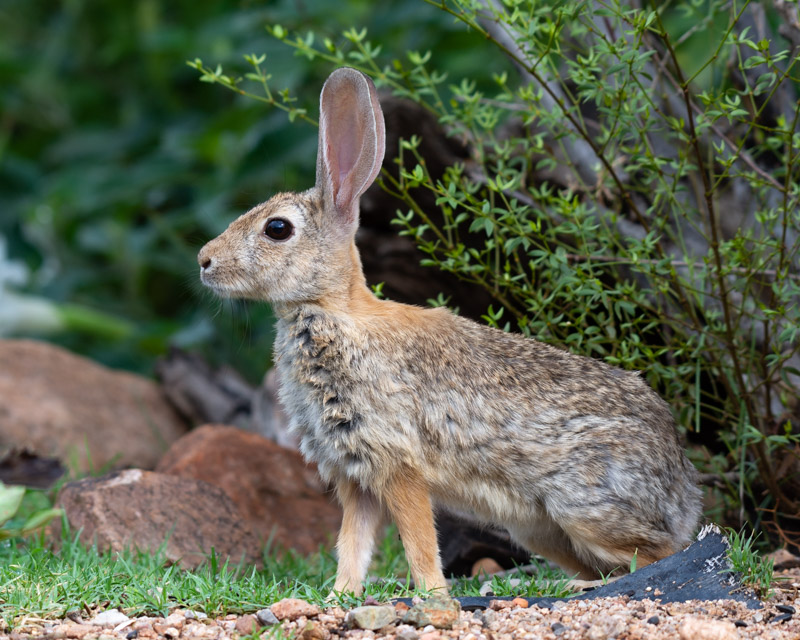
Even if you are not a predator, how can you ‘resist’ this little one?
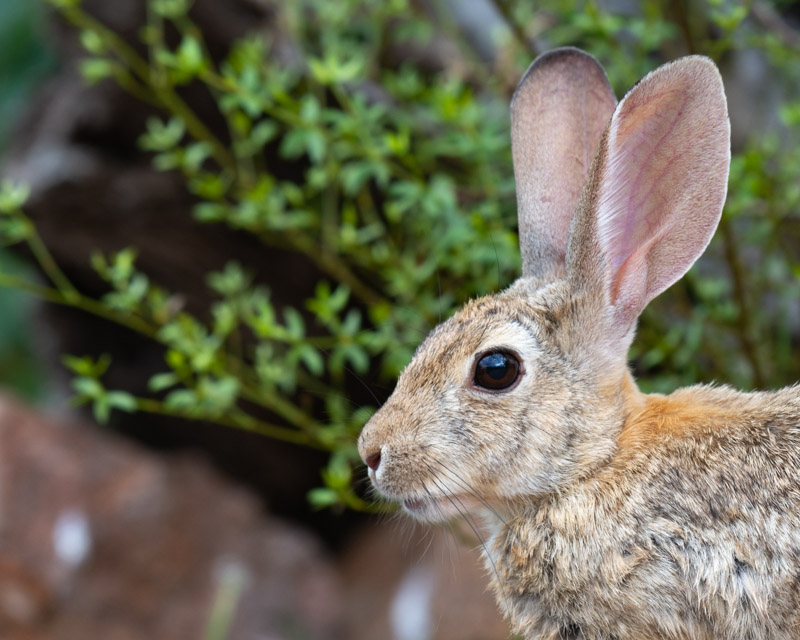
More to come from The Pond: Cardinals, Pyrrhuloxia, and oh-my-goodness shots of a rattlesnake!
